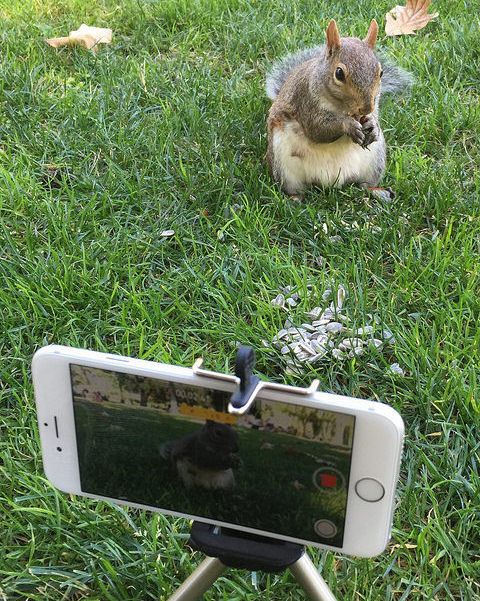Like this article? rabble is reader-supported journalism. Chip in to keep stories like these coming.
One of the great mistakes of using a smartphone for video or stills is to treat it like a point-and-shoot camera. Sure, it is about the size of one, but a smartphone’s small lens and tiny sensor mean that in order to get the best out of it, you actually have to slow down, be mindful and think a bit about what you’re doing. You might even need to supplement the device with some peripherals.
To help you, here are a few things to consider if you want your results to shine:
For the love of God, use a tripod.
Yes, I know your device probably has digital image stabilization, or even optical image stabilization. But, especially for video, that isn’t a serious replacement for steadying the whole camera. There are a variety of cheap clips that will let you connect your smartphone to a standard tripod. The tripod need not be big and bulky.
Try a tabletop unit or one with articulated legs like the Gorillapod. Or, if a tripod isn’t possible, at least brace the phone on the back of a chair or against a door jam. Anything is better than letting it float free at the end of your monkey arms. Nothing says amateur video like a bobbing, wavering image.
Another option is to use a piece of software like Hyperlapse (for the iPhone). Hyperlapse is meant to smooth out sped-up or time-lapsed video. But, if you save the video from it at regular speed, it dramatically improves the smoothness of your shot.
Use an external mic.
Except in ideal circumstances, it is impossible to record decent audio for video recordings using the built-in microphones on mobile devices. They’re great for conference calls or recording quick bits for podcasts, because you can get the mic close to you or your interview subjects. But, typically, video shoots put your subject a few feet or more from the camera. So, you need to use an external microphone. I generally use lavalier mics that plug into either the headphone or Lightning connector on my phone. Other mics can plug directly into the headphone jack and stick out from the smartphone, but those aren’t best for one-person interviews, better for crowd scenes and ambient sound.
Use lights.
In diffuse light, smartphone cameras work great. But, they are not great in harsh outdoor sunlight nor in low light. If you can, shoot your video with some additional artificial lighting. I use a light sabre-shaped light called the Ice Light for a lot of my shoots. You can also get inexpensive LED lighting from Canadian Tire or Home Depot that work great and are cheaper than pro LED lighting kits from camera stores. The other advantage of using careful lighting is that you will save yourself a ton of time in post-production because you won’t have to try to salvage badly lit material.
Take time to compose your shot.
Amateur shooters very often are so concerned about trying to make their subject look good, they forget about the background altogether. Then, we they edit their video, they spot junk (sometimes embarrassing junk) in the background of the shot. Or, for fear of cluttering a shot, they’ll shoot against a dull background and end up with a composition that is devoid of interest and atmosphere. Slow down, review the entire scene and don’t be afraid to “set dress” the background to make it look attractive.
Don’t go crazy with B-roll.
If you’re shooting the sort of video interview that would benefit from cutaway shots to the objects or events mentioned you’ll need to gather what is called B-roll footage. If you were shooting a serious, long documentary you’d want a lot of that footage so you have maximum choice. But, for shorter, smartphone videos you probably want to turn around quickly, it makes more sense to shoot as little B-roll as possible so you don’t waste time logging and going through a ton of footage you’ll never use. The more video shot, the more you’ll get used to the kind of B-roll you’ll need. At first, err on the side of caution and work your way down.
Consider editing on your mobile device.
Video editing software and the processing speed of mobile devices has gone from strength to strength in the last couple of years. I routinely do all my video editing on my smartphone, from which I also upload the footage directly to YouTube and Vimeo. It means that I can go on a shoot and have the video complete by the time I get off the bus on the way home. That’s why we have mobile devices, really.
That’s it. Pay attention, take your time, use a few peripherals and don’t be afraid to do all the work on your smart device. Now, get out there and shoot, kids.
Wayne MacPhail has been a print and online journalist for 25 years, and is a long-time writer for rabble.ca on technology and the Internet.
Photo: Andy Ihnatko/flickr
Like this article? rabble is reader-supported journalism. Chip in to keep stories like these coming.



